Can You Close a Frozen Bank Account
A bank account may be frozen due to suspicious activity or it could be locked up by your financial institution for any number of reasons. When an account is frozen, no one can withdraw funds or make transactions. But what you really might be asking is if you can close a . The answer is, yes. You can close a frozen bank account.
The process of closing a frozen bank account will vary depending on the institution with whom you have the account and its policies. Some banks require that you request the closure of your account in writing. Others will allow you to submit it online or by phone. Some may even permit you to do it in person at a branch location. See? It can be complicated.
If your account was frozen and you can no longer access the money in it, this is what you need to know: DoNotPay can help.
When a Bank Account is Frozen
A frozen bank account is one that you can no longer access. It may be temporarily or permanently locked down, but either way, ; it just can't be used.
The most common reason for a frozen bank account is due to suspicious activity. For instance, if you make a large deposit and someone else tries to withdraw the money from the same account, it will be frozen due to possible fraud or identity theft.
Banks are required to file a Suspicious Activity Report (SAR) with the US Authorities or FinCen. The top five states that filed SAR with FinCen comprising a bigger percentage of the more than two million accounts reported in 2020 are:
| Rank | State/Territory | Filing (Overall) | Percentage (Overall) |
| 1 | California | 1,212,513 | 13.90% |
| 2 | New York | 752,074 | 8.62% |
| 3 | Texas | 702,523 | 8.06% |
| 4 | Ohio | 598,887 | 6.87% |
| 5 | Virginia | 506,708 | 5.81% |
The bank has been entrusted with holding onto your money for you when you open an account, but to protect their resources in case of an unauthorized use, they need to know that your account is legitimate.
Other reasons for a frozen bank account could include:
- A check bouncing: if the account doesn't have enough money to cover a transaction and then bounces another transaction, then it's effectively "tapped out." The bank will need to ensure that all transactions coming from this account are legitimate before releasing any funds.
- An overdraft: much like a check bouncing, an overdraft occurs when someone withdraws money that they don't have in their account. That can happen if your bank account is short or overdrawn, the person tries to withdraw more than what's in their account, or if there are insufficient funds for a check to clear.
- A hold: this occurs when you deposit with the bank. The bank may hold the funds in case you bounce a check or overdraw your account, to see if they can sort out the problem before releasing any funds.
- A dispute: if someone else is trying to get a court order against your assets, then even though you have money in a bank account, it may be frozen until a judge rules on the matter.
- A security freeze: if you have your identity stolen, you can request a security freeze against your bank accounts so that no one else can access them without your personal information. However, even with a security freeze in place, banks will typically still honor valid withdrawals or deposits from existing account holders.
Closing an Account When It’s Frozen
If you wish to close an account when it's frozen, you must follow all of the rules that were imposed on your account. That means if the bank froze your account temporarily while they investigated some activity, you cannot close that account until it is reopened.
You'll need to provide all of the same documentation that was requested when your account was opened initially and meet any other requirements that were imposed on the account due to a security hold or dispute. If you're unable to satisfy these requirements, your account will remain frozen and you'll need to take steps to unfreeze it.
Frozen Bank Account Notifications
As soon as you receive word of an action taken against your bank account, you should contact the bank if possible and find out what the problem is and how to resolve it. If you're unable to get in touch with the bank, here are some potential actions to take:
- If you receive a phone call or letter from the bank saying your account has been frozen due to suspicious activity, contact the number provided. If you don't have time to talk on the phone with customer service representatives, go to the bank in person if possible. Be sure to bring any documentation that you have related to the frozen account.
- If your bank account is frozen because of a dispute, contact the number on the letter received and ask for more details about what's required to unfreeze it. If you can provide all of the documents requested, then follow up in person if possible to be sure everything goes smoothly.
- If your bank account is frozen due to a security freeze, it can take up to three days for the freeze to be lifted once you contact the proper authorities and provide some documentation like photo identification. You don't need to physically visit the bank or send in any documents; just get in touch with them by phone or email.
- If your bank account is frozen due to a valid transaction being made, you may need to wait until the issue has been resolved with the customer who made the withdrawal or deposit before your funds are released.
How to Close an Account When You Can't Access It
Closing a frozen bank account can be tricky, but it isn't impossible.
If you don't have access to your bank account, you can attempt to close it by following these steps:
- Contact the bank. Find out if there is a timeframe for when the funds will be unfrozen and explain why you're unable to access them right now.
- Ask the customer service representative of the bank what documentation you'll need to provide, such as an identification card, the date of birth of the person responsible for the frozen account, etc.
- Provide any documentation you're asked to provide. If you need to send anything in via postal service then allow at least three days for it to arrive and be processed into your account before contacting customer service again.
- Once all documents have been submitted, you can wait to be notified by the bank of your account's status. If you don't receive a follow-up notification after a week then call the customer service representative again to check whether it has been closed or is still frozen.
Quick Steps to Close a Frozen Bank Account with DoNotPay
If you want to close a frozen bank account but don't know where to start, DoNotPay has you covered. Create your cancellation letter in 6 easy steps:
- Go to the Close Bank Accounts product on DoNotPay.
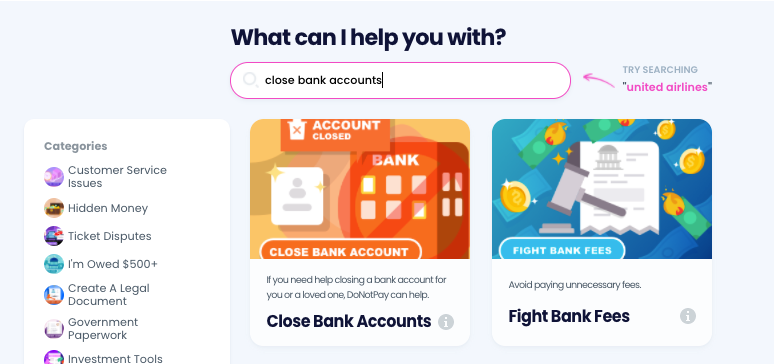
- Select which bank the account was opened under, and enter the account type, account number, and your local branch location.

- Indicate who this account belongs to. If the owner or co-owner has passed away, upload a death certificate or other formal evidence. If you are not the original account owner, upload evidence of your relationship with the owner.
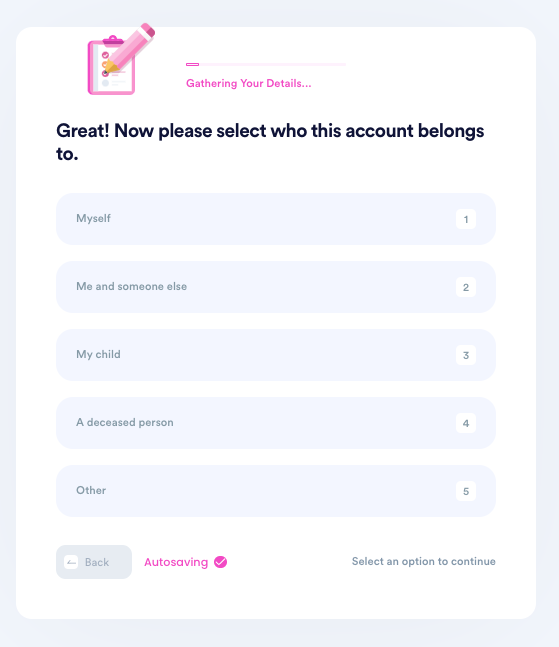
- Tell us why you need to close this account.
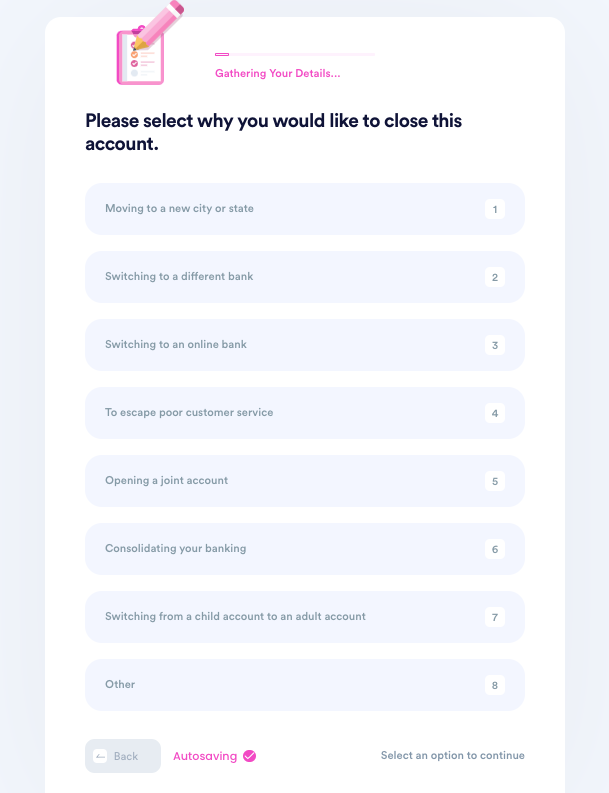
- Enter your contact information, including email, phone number, and the address you want any remaining funds to be sent to.
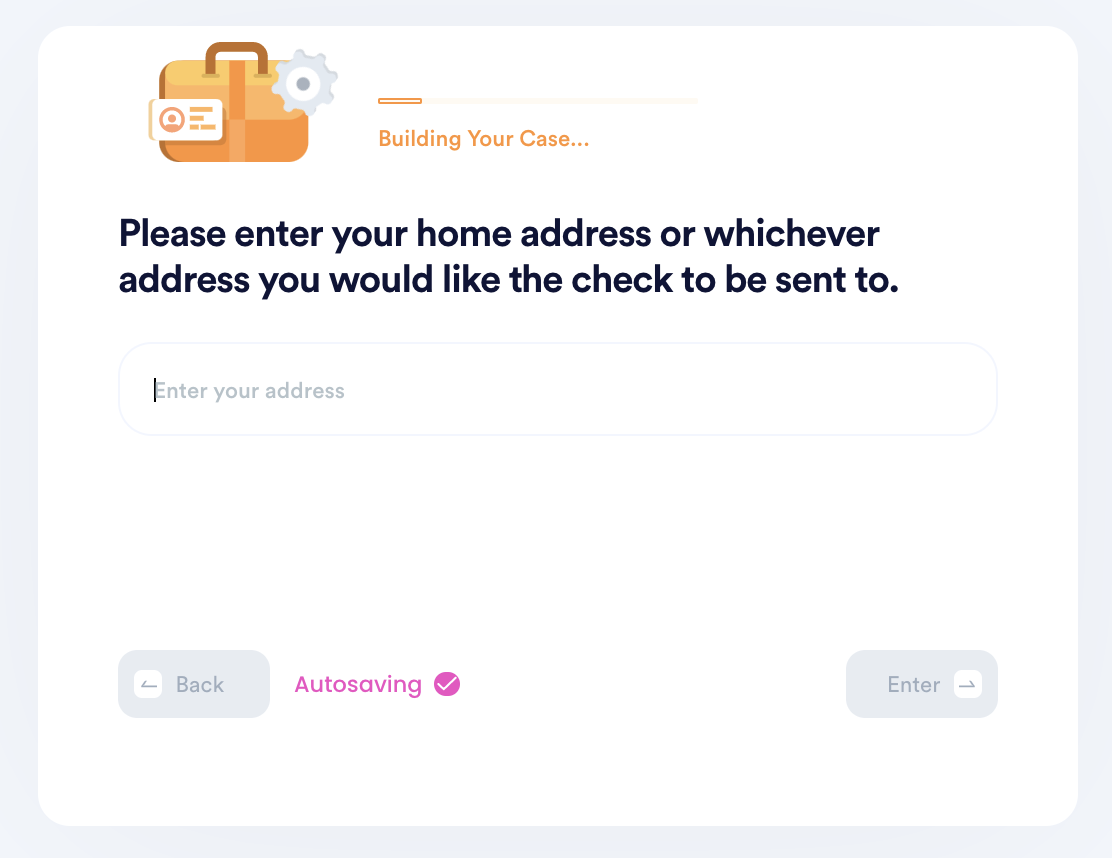
- Submit your task! DoNotPay will mail the request letter on your behalf. You should hear back from the bank with confirmation or a request for more information within a few weeks.
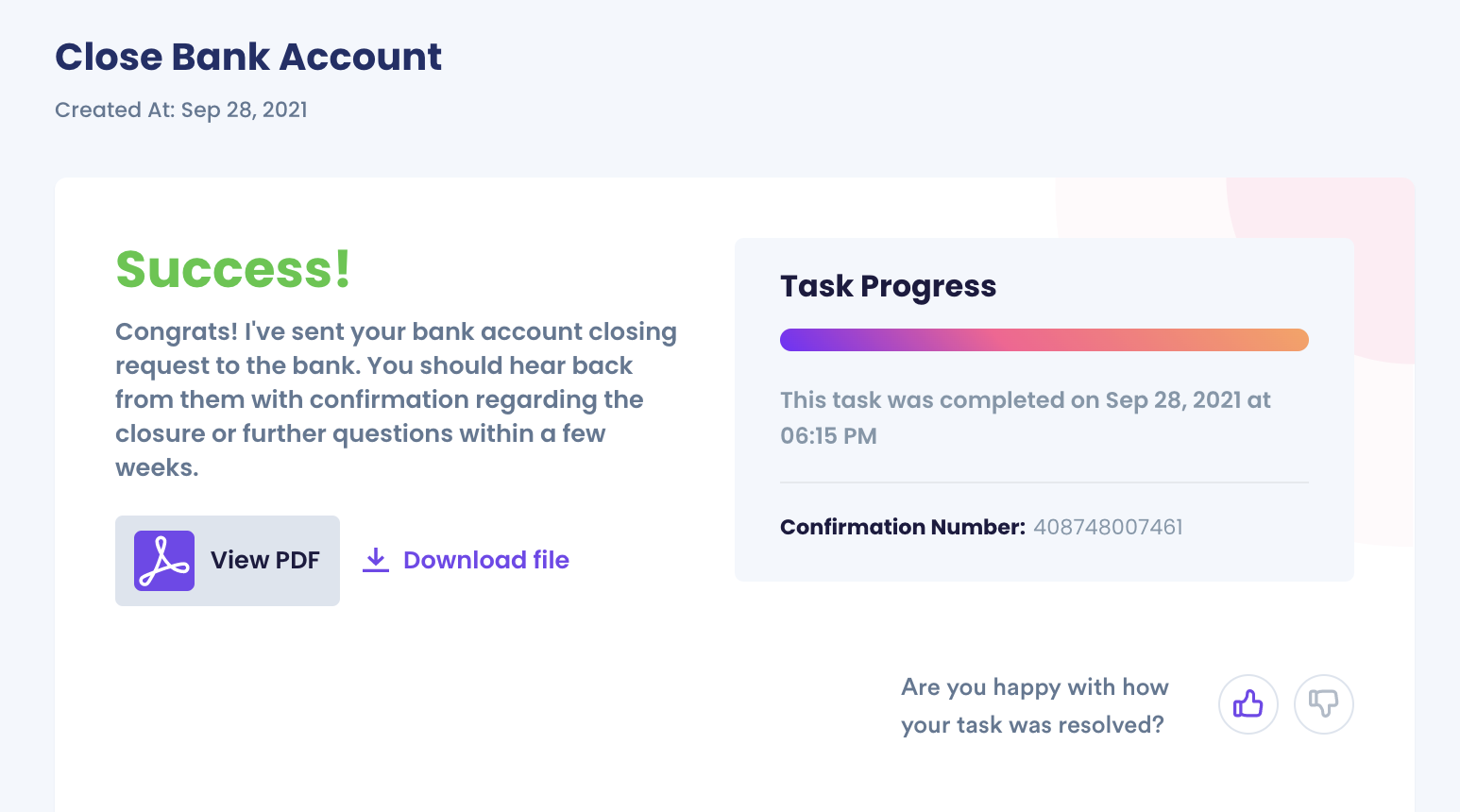
Why Use DoNotPay to Close a Frozen Bank Account?
You can't access your bank account because it's frozen. It's frustrating when you need to close a bank account but can't get in touch with customer service or find the time to go into the branch.
DoNotPay is here for you! Create your cancellation letter in 6 easy steps and we'll send it off on your behalf, saving you the hassle of waiting on hold or driving all over town. We make closing a frozen bank account as easy as possible so that you don't have to worry about anything else other than what matters most - getting back to living life. Need help closing your account? Try DoNotPay, an automated form that can be filled out in 6 easy steps!
 By
By